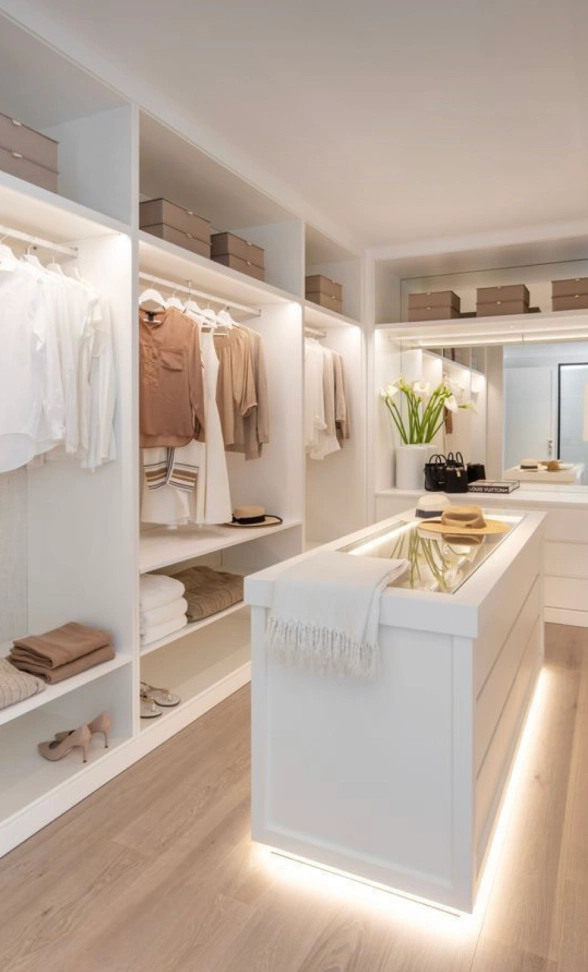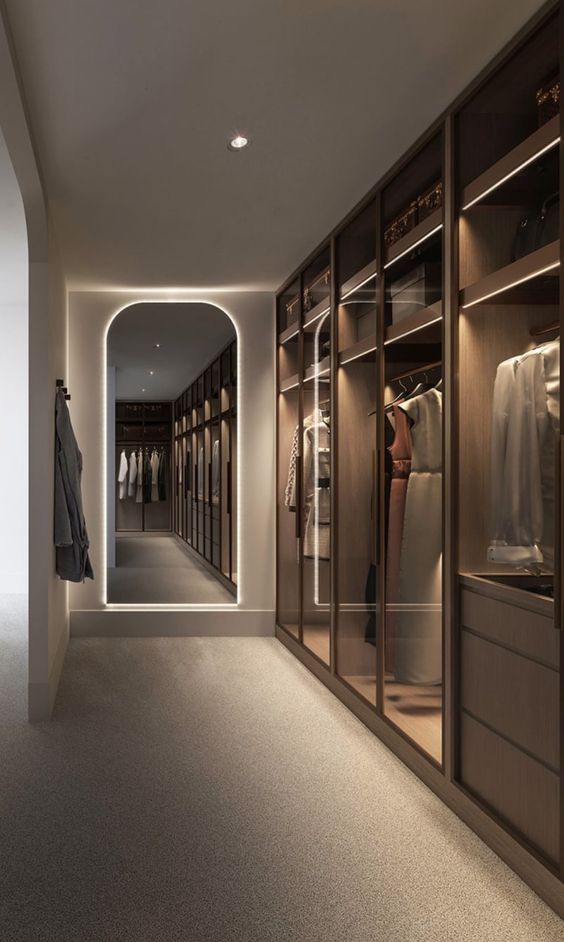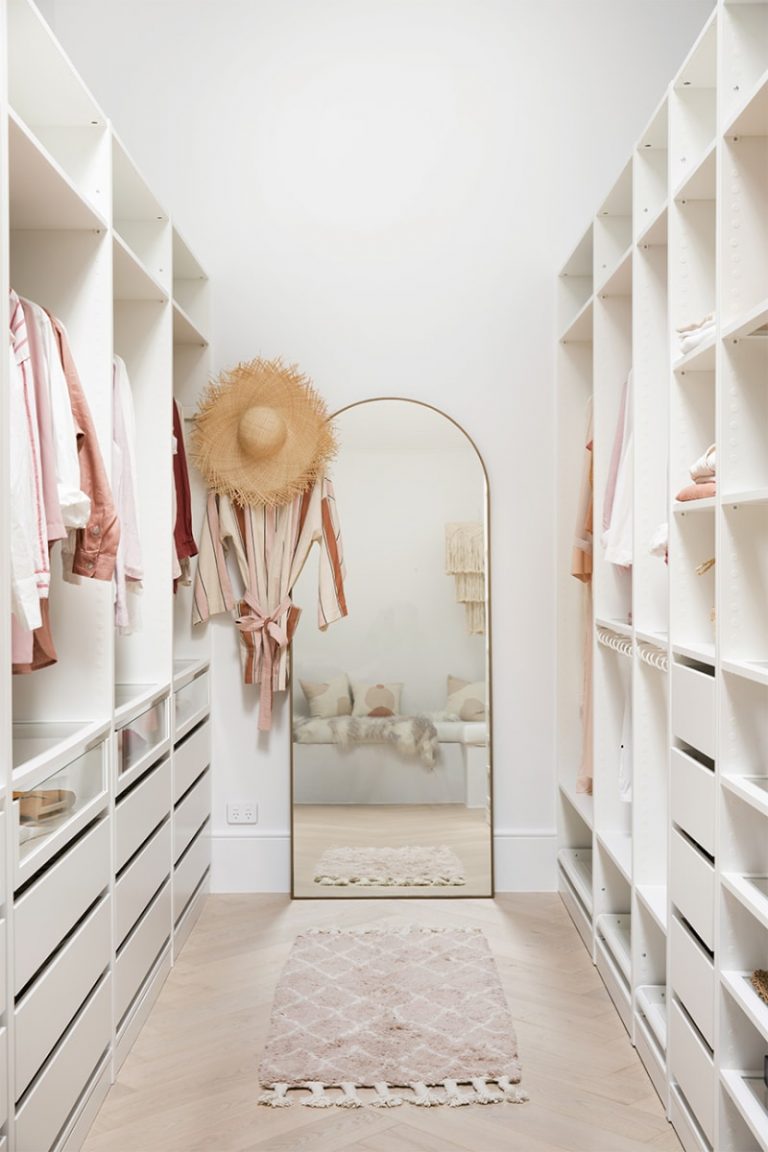In a world full of options and visual stimuli, minimalism in dressing room design emerges as a trend that embraces simplicity, elegance and functionality. That’s why NCalma Homes gives you some tips on how to make it happen, less is more, and each garment becomes a statement in its own right. Explore with us how to apply the minimalist aesthetic to your dressing room design to create an elegant, serene and fully functional environment.
Clean lines and open spaces
The first principle of minimalist design is to maintain clean lines and open spaces. Opt for furniture and shelves with simple, unadorned designs. Built-in cabinets and floating shelves help create a sense of spaciousness and order in the dressing room.
Neutral colours and soft tones
The colour palette in a minimalist dressing room usually includes neutral tones such as white, grey, beige and soft tones. These colours create a calm and elegant atmosphere, allowing the clothes to be the visual protagonists of the space.
Functional organisation
In a minimalist dressing room, functional organisation is key. Use smart storage solutions, such as organiser drawers, uniform hangers and transparent bins. Each item should have its own designated place to maintain visual harmony and easy access to garments.

Natural materials and subtle textures
Opt for natural materials such as wood, bamboo or polished metal for furniture and accessories in the dressing room. Subtle textures, such as linen, cotton and wool, add warmth to the space without overwhelming the minimalist aesthetic.
Soft, natural lighting
Lighting plays a crucial role in a minimalist dressing room. Prioritise natural light whenever possible, allowing it to enter the space through windows or skylights. For artificial lighting, opt for soft, recessed LED lights that evenly illuminate the area without creating distracting shadows.
Eliminate unnecessary elements
In a minimalist dressing room, less is more. Eliminate any unnecessary elements that may distract or visually overwhelm the space. Keep only the clothes and accessories that you really use and that bring you joy and functionality.

Multifunctional spaces
Make the most of every square centimetre of the dressing room by designing multifunctional spaces. Incorporate storage areas that also serve as seating or work surfaces, maximising the functionality of the space.
Select decorative artefacts
In a minimalist dressing room, decorative artefacts should be carefully selected to complement the overall aesthetic of the space. Opt for simple sculptural pieces or minimalist artwork that add visual interest without overwhelming the calm and serene ambience of the dressing room.
Regular maintenance
To maintain the minimalist aesthetic in your dressing room, it is important to perform regular maintenance. Take time periodically to review and organise your clothes and accessories, removing any items that you no longer need or that don’t fit your current style.

In short, a minimalist dressing room is an oasis of calm and elegance where each garment and accessory makes a statement in its own right. By applying the principles of minimalism to your dressing room design, you will create a space that is not only functional and organised, but also aesthetically beautiful and completely customised to your lifestyle and fashion tastes.